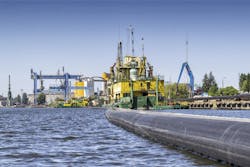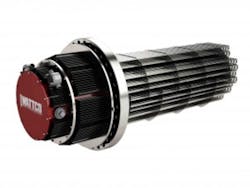Process heating in the oil industry is essential for a number of reasons. First, it improves oil flow viscosity making it easier to pump viscous fluids like crude oil and crude oil components. However, heat in itself can also present a problem, as too much heating can lower quality. To deal with this problem, modern methods involving circulation and immersion heaters are controlling oil flow viscosity while maintaining proper heat control.
Oil flow viscosity technology applications
Water separation
As oil wells age, it becomes necessary to improve production and special applications are there to separate water and oil from the fluids. In the past, many of these oil-heating applications utilized fuel. However, many companies are realizing a great deal of benefit when they changeover from fuel to electric heat. This can be done via immersion heat that is direct or indirect.
READ ALSO: Pipeline Viscosity Reduction Goes Next Generation
Direct immersion heat
In this scenario, the immersion heater element is placed directly into the oil to be heated. When the heating element is submerged in the oil, no heat is lost and it is all transferred directly into the oil. This is very efficient method for oil flow viscosity applications.
Indirect immersion heat
With this method, a heating element does not come into direct contact with the fluid to be warmed. The heating element is placed inside of a special pipe and this is sometimes referred to as dry-well heat. Heat can then be transferred to the fluid in three different ways:
- Conduction
- Convection
- Radiation
Modifications
Flange-mounted immersion heaters (Courtesy Wattco)
Changing over from fuel to electric heat takes some modifications. However, it is not difficult to retrofit most applications. In fact, a typical flange-type immersion heater is often used for a variety of situations.
During installation, one must ensure BTU rating is significantly lower than the previous fuel system, as an electric process heater is much more efficient than gas. In fact, it can take as much as a 50 percent reduction. This would mean that a 500,000 BTU fuel unit can sometimes be replaced with an electric immersion heater with a rating of 250,000 BTU. Yet, the exact specifications must be taken into consideration, including the type of crude oil being pumped.
Circulation heater applications
Circulation heating is also referred to as "in line" and can use either direct or indirect heat.
Direct circulation heaters
These units are usually tubular in construction. They can be mounted with flanges or threads. The units contain both inlet and outlet nozzles and oil is circulated throughout the unit and then pumped into the tank. The warmed oil then mixes with the cool oil to eventually warm all the fluid, all the while the heating unit is submerged or in contact with the oil system.
Indirect circulation heaters
With indirect circulation heat, the heating unit is mounted separately from the oil. A good example would be a skid mounted circulation heater for a large oil tank. Oil is pumped to the outside of the tank to be warmed, and then introduced back into the tank.
The importance of engineering
Immersion and circulation heating for oil flow viscosity requires assessment of a number of variables. For example:
- Corrosion
- Viscosity
- Flash temperature
- Heating materials
- And much more
As such, it is recommended to engage with engineers who are experienced with immersion heating processes to ensure greater efficiency and lower maintenance costs.
Ilan Toledano, vice president of Wattco, has more than 25 years of experience in the electric heating industry, including sales and marketing, product development, and expansion of the industrial immersion heaters in the water, chemical, and oil and gas industry. Toledano can be reached at [email protected].



